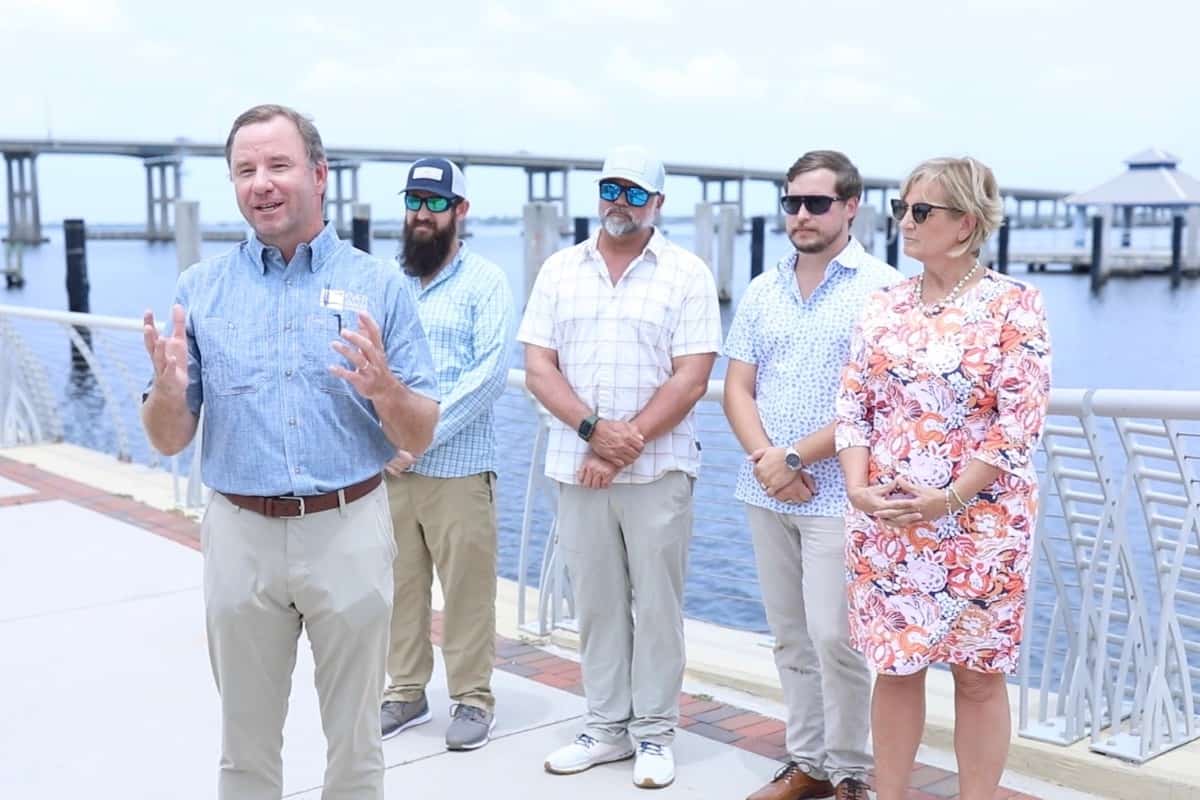The Everglades Foundation blames Lake O for Lee County water issues, no plan promoted to address local runoff

FORT MYERS, Fla. (FLV) – The Everglades Foundation held a press conference in Lee County Wednesday, continuing to put blame on Lake Okeechobee for local algae blooms despite data showing that poor infrastructure is a major part of the local problem.
“But we see algae again as we gather today. Algae along the Caloosahatchee. Algae here in Fort Myers, Cape Coral,” Eric Eikenberg, the chief executive office for The Everglades Foundation, said.
“And it raises concern,” Eikenberg continued.
The Everglades Foundation said Lake Okeechobee was a major contributor to algae blooms in 2013 and 2016 as the group urged Congress for $425 million to finish the reservoir south of the lake. The reservoir would store, clean, and send water from the lake to the Everglades.
“And these manmade disasters from Lake Okeechobee with the algae, we want to again bring a heightened awareness to it,” Eikenberg said has he noted that the lake sits at a foot higher than a year ago.
Eikenberg declared the $425 million for Everglades restoration “the solution to our water quality issues.”
While the group emphasized the Lake Okeechobee algae build up issues and its effect locally, a 2023 Lee County study showed that poor infrastructure and widespread human waste pollution in Lee County is at fault for much of the harmful algal blooms in the Caloosahatchee River Estuary.
The study said drainage ditches, canals, creeks, and the Caloosahatchee River Estuary “often have high concentrations of nutrients and bacteria limiting their designated uses.” It connected terrible infrastructure to the harmful algal blooms and poor water quality and urged for infrastructure improvements.
Florida’s Voice asked Eikenberg what he thought of the study that showed aging infrastructure and septic tanks as a leading contributor to local water quality problems.
“I’ll let the locals speak to the actual Lee County study,” he said. “As far as the Everglades Foundation is concerned, there’s a variety of reasons why Lake Okeechobee is a sick body of water.”
He contineued to explain that estuaries are in “disrepair” and declared that Tallahassee needs to “step up” and figure out how to deal with septic tanks.
“The locals need to figure out how they’re going to deal with it,” he explained. “So if there’s an issue with septics, why are we still then placing septic tanks into these types of developments? So it should be part of the issue.”
He then pivoted to talk about the the 70,000 acres of filtration marshes south of the lake that will take the already polluted water.
According to the Southwest Florida Water Management District, 80% of the inflow into the Caloosahatchee River has been run off from the local watershed basin.
Florida’s Voice asked what the group’s plan and effort was to encourage local communities to deal with local runoff, which does contribute to the algae build up. The top environmental group’s leader did not provide specifics.
“The answer to that good question will come in time,” Eikenberg said. “Today was simply reengaging. We have to have these collaborative moments.”
“Let’s in a collaborative way come up with some tangible solutions. Let’s pursue them in Tallahassee and Washington,” he continued.
While the leader of one of the most prominent environmental groups in Florida did not have an answer, other activists at the press conference jumped into the mix.
Sanibel-Captiva Conservation Foundation Matt DePaolis noted that basin runoff is something that will need to be dealt with in Lee County.
He noted that local waterways have seen blue-green algae blooms without getting releases from the lake.
“But that is not to say that’s the only thing we should be dealing with,” DePaolis said. “We know the lake is an entity that needs to be dealt with and the water from the lake really has a negative impact on our communities.”
Sanibel Mayor Holly Smith said Lake Okeechobee and the Lee County study regarding sewage are “two separate issues.”
“And we’ve got to deal with that locally, but we’ve also got to make sure that we’re looking at the bigger issue and that is the flow of Lake Okeechobee from north, east, south and west and how that’s supposed to work,” she said.
Florida lawmakers approved $125 million for infrastructure improvements targeting water quality. Out of that batch, $25 million was allocated for water quality improvements in the Caloosahatchee River waters.
Senate President Kathleen Passidomo, R-Naples, told Florida’s Voice these investments will go a “long way to improve the water quality of our region for years to come.”
In this year’s budget, we had the amazing opportunity to make key generational investments in many areas of our infrastructure, from workforce housing, to transportation, to clean water, to our iconic Wildlife Corridor. With regard to clean water, we invested significantly in projects that include septic to sewer conversions, wastewater treatment facility expansions or upgrades, and stormwater treatment. We have funds set aside to improve the water quality and the watersheds of the Caloosahatchee River, including wastewater collection and treatment, stormwater treatment, reuse, water conservation, hydrologic restoration and natural system restoration.
Senate President Kathleen Passidomo



